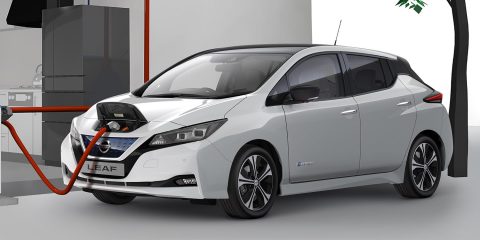TimeGhost History
Published 30 Dec 2020Louis Armstrong will be one of the greats of the American Century. But before that, others have to blaze a trail for him. No mean feat in a land of racial tension…
Join us on Patreon: https://www.patreon.com/TimeGhostHistory
Hosted by: Indy Neidell
Written by: Indy Neidell and Francis van Berkel
Director: Astrid Deinhard
Producers: Astrid Deinhard and Spartacus Olsson
Executive Producers: Astrid Deinhard, Indy Neidell, Spartacus Olsson, Bodo Rittenauer
Creative Producer: Maria Kyhle
Post-Production Director: Wieke Kapteijns
Research by: Indy Neidell and Francis van Berkel
Edited by: Michał Zbojna
Sound design: Marek Kamiński
Colorizations: Mikołaj Uchman and Spartacus OlssonSources:
Some images from the Library of CongressFrom the Noun Project:
world by Arafat Uddin
Stamp by Made
questions by Gregor Cresnar
Money by DARAYANI
Money Bag by HAMEL KHALED
people by Florent LenormandSoundtracks from Epidemic Sound:
“Epic Adventure Theme 3” – Håkan Eriksson
“You’re Trouble” – Rich in Rags
“1920s Chicago 2” – Magnus Ringblom
“It’s Not a Game” – Philip Ayers
“Weapon of Choice” – Fabien Tell
“On the Edge of Change” – Brightarm Orchestra
“For the Many STEMS INSTRUMENTS” – Jon Bjork
“Easy Target” – Rannar Sillard
“Step on It” – Golden Age RadioArchive by Screenocean/Reuters https://www.screenocean.com.
A TimeGhost chronological documentary produced by OnLion Entertainment GmbH.
December 31, 2020
Louis Armstrong and the Beginning of the Jazz Age | BETWEEN 2 WARS: ZEITGEIST! I E.08 – Summer 1920
The limiting factor that holds back the green dream of electric cars everywhere
I’m not actually against the spread of electric vehicles — where appropriate — but we’re a long way technically speaking from an all-electric future on the roads. Alongside the vast increase in our electric generation and distribution infrastructure such a change would require, there’s also the practical limitation of what is currently possible in battery technology, and hoped-for improvements will require significant breakthroughs which seem more than just a step beyond our current capabilities:
“There are liars, damned liars, and battery guys” – or some variation thereof – is an aphorism commonly attributed to US electro-whizz Thomas Edison.
Edison’s anecdotal frustrations remain valid today because scarcely a month goes by without a promised battery revolution, and scarcely a month goes by without that revolution arriving.
In October, for example, The Register encountered Jagdeep Singh, CEO of QuantumScape, a battery startup that boasted a new type of battery that could double the range of electric vehicles, charge in 15 minutes, and is safer than the lithium-ion that dominates the rechargeable market.
“Ten years ago, we embarked on an ambitious goal that most thought was impossible,” Singh said in a canned statement. “Through tireless work, we have developed a new battery technology that is unlike anything else in the world.”
Singh might disprove Edison’s aphorism and deliver the better batteries the world will so clearly appreciate. But to do so he’ll have to buck a 30-year trend that has seen lithium-ion reign supreme.
Why has the industry stalled? The short answer is that chemistry hasn’t found a way to build a better battery.
“The basic concept of what a battery is hasn’t shifted since the 18th century,” says Professor Thomas Maschmeyer, a chemist at the University of Sydney and founding chairman of Gelion Technology, a battery developer. All batteries, Maschmeyer explains, consist of three main building blocks: a positive electrode, called a cathode; a negative electrode, called an anode; and an electrolyte that acts as a catalyst between the two sides. “These three elements cannot change. So, if you want a breakthrough, it must come from a fundamental change in the chemistry,” Maschmeyer says.
Better living through chemistry
Battery boffins have proposed a periodic table’s worth of alternative compounds that could surpass lithium-ion batteries.These largely fall into two categories. First, batteries that are trying to surpass the energy densities that lithium offers, such as solid-state batteries, lithium-sulphur, and lithium-air. The other is batteries comprised of more abundant materials such as sodium-ion batteries, aluminium-ion, and magnesium-ion batteries.
But changing the chemistry of batteries is easier said than done, says Professor Jacek Jasieniak, a professor of material sciences and engineering at Monash University. He compares changing one element in a battery to changing a chemical in a pharmaceutical. “Often solving one problem exacerbates another,” he says.
How To Make a Bench Without a Bench – Beginner Woodworking Project
Wood By Wright How 2
Published 3 Oct 2020Watch the How to version here: https://youtu.be/siawb_7JI8g
Sarah is making her first bench, without a bench, with just basic hand tools, and we get to follow along. This is the perfect beginner woodworking project. The bench will be made from poplar and red oak, all purchased from the big box store.
Vice Used on this bench: https://amzn.to/3nghMPi
—Tools I Suggest—
https://www.woodbywright.com/tool-sug…—Find Antique tools near you—
http://www.HandToolFinder.comTop Patreon Supporters:
DFM tool Works: https://dfmtoolworks.com/
Poor Man
Travis Reese
Alan Smith – http://www.flourishinggrace.org/listen/
Andrew Wilson
Tomás Kelly
Ken Strohmeyer
Adam Nester
Bryan Fulmer
Aaron Fenn////Help this channel grow\\\\
https://www.woodbywright.com/support/////You Can find me:\\\\
https://www.woodbywright.com/contact-me/Intro music: Tim Sway http://timsway.net/
background music: Udo Stehle https://www.upwork.com/freelancers/~0…
Instagram: @udostehle
QotD: The “noble savage” belief system
… the whole weeks-long saga, which featured urban protestors appearing alongside their Indigenous counterparts at road and rail barricades throughout Canada, tapped into a strongly held noble-savage belief system within progressive circles. Various formulations of this mythology have become encoded in public land acknowledgments, college courses, and even journalism. The overall theme is that Indigenous peoples traditionally lived their lives in harmony with the land and its creatures, and so their land-use demands transcend the realm of politics, and represent quasi-oracular revealed truths. As has been pointed out by others, this mythology now has a severe, and likely negative, distorting effect on public policy, one that hurts Indigenous peoples themselves. In recent years, Indigenous groups have finally gotten a fair cut of the proceeds of industrial-development and commodity-extraction revenues originating on their lands. And increasingly, they are telling white policy makers to stop listening to those activists who seek to portray them as perpetual children of the forest. It is for their benefit, as much as anyone else’s, to explore the truth about the myth of harmonious Indigenous conservationism.
***When the ancestors of North America’s Indigenous peoples entered the New World some 16,000 years ago via Siberia, they hunted many of the mammals, reptiles, and birds, from the Arctic down to Tierra del Fuego. Mammoths, mastodons, and enormous ground-dwelling sloths, as well as giant bears, giant tortoises, and enormous teratorn birds with 16-foot wingspans — animals that had never had a chance to evolve in the presence of humans — were among the many species that disappeared from the Americas. Some medium-sized animals — such as horse, peccary, and antelope species — were also wiped out. But others survived: Bison and deer species, tree sloths, tapirs, jaguars, bear species, alligators, and big birds such as rheas and condors are, at least for the time being, still with us. The existence of these survivors, along with the relatively unspoiled forests, grasslands, and rivers seen by the first Europeans to enter the Americas, served to support the illusion that America’s first peoples had been maintaining what popular environmentalist David Suzuki calls a “sacred balance” with the natural world. Throughout history, however, humans killed animals that were tasty, numerous, and huntable. For kin-groups, staying alive meant making life-and-death cost-benefit calculations about where to send your berry-pickers and hunters. “Sacredness” had nothing to do with it.
This is not to say that the Indigenous peoples who migrated from Asia to the Americas were especially bloodthirsty (though Europeans typically reported that their hunting and fishing skills were excellent). In every known case where humans entered continents formerly uninhabited by our species, the bigger animals tended to disappear, since they provided the most sustenance per kill. The first humans to enter Australia some 70,000 years ago wiped out giant kangaroo species, rhino-sized marsupial herbivores, jaguar-sized marsupial carnivores, big flightless birds, and many other megafauna. The same thing would happen in Europe: After sapiens completed its occupation of that sub-continent some 30,000 years ago, the mammoths, woolly rhinos, giant deer, and lions they recorded in their cave paintings and carvings also disappeared.
Baz Edmeades, “The Myth of Harmonious Indigenous Conservationism”, Quillette, 2020-09-06.






